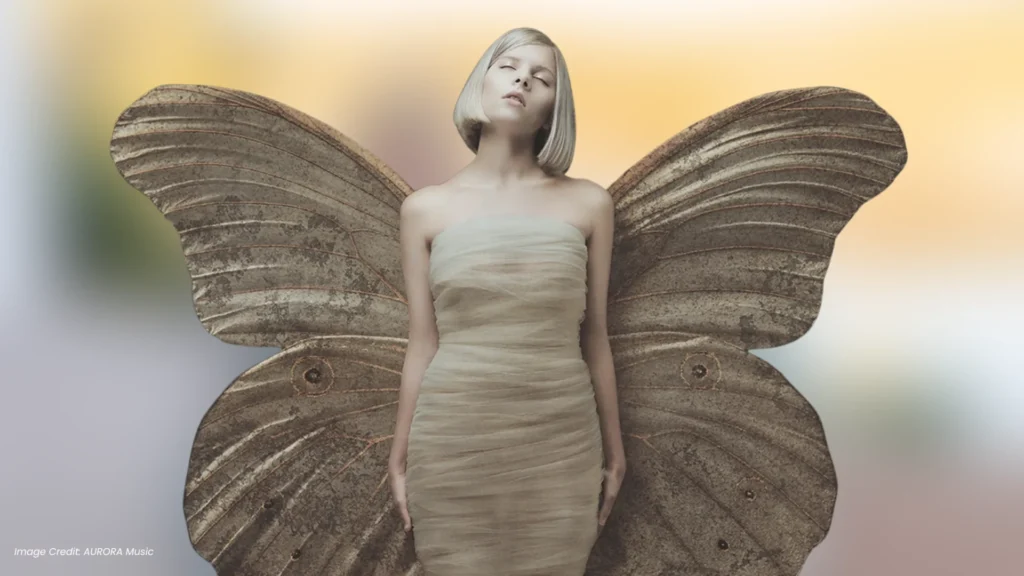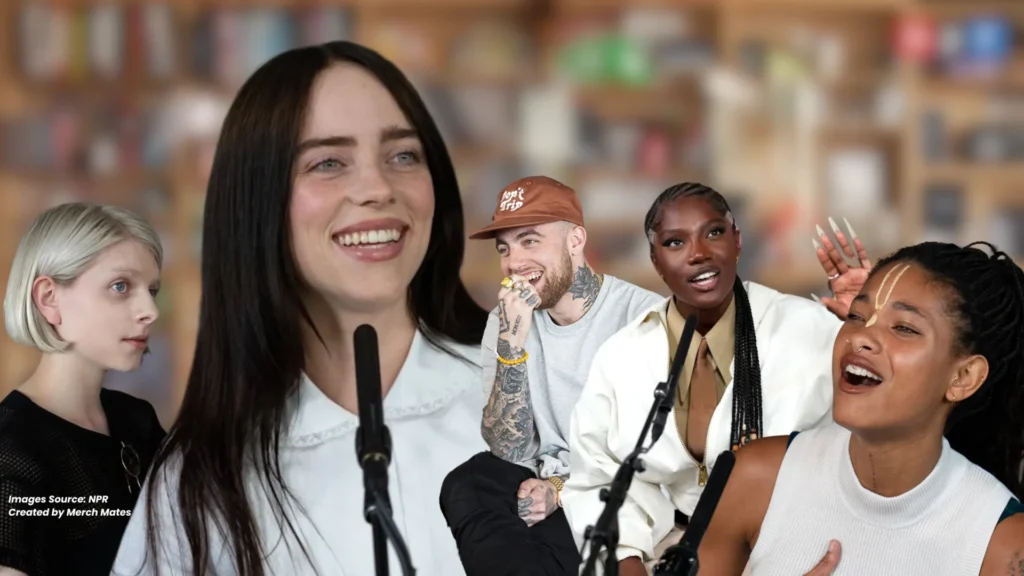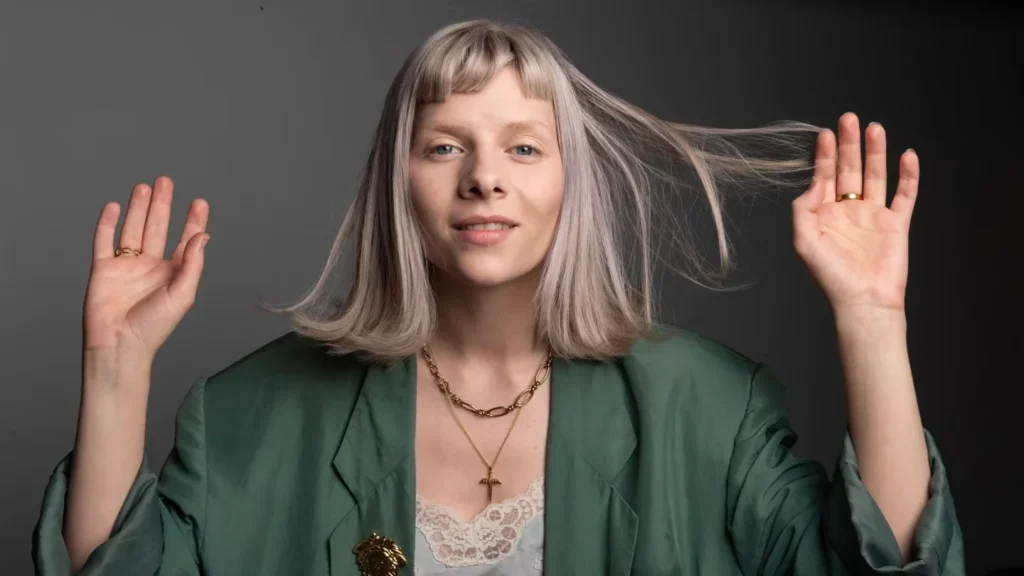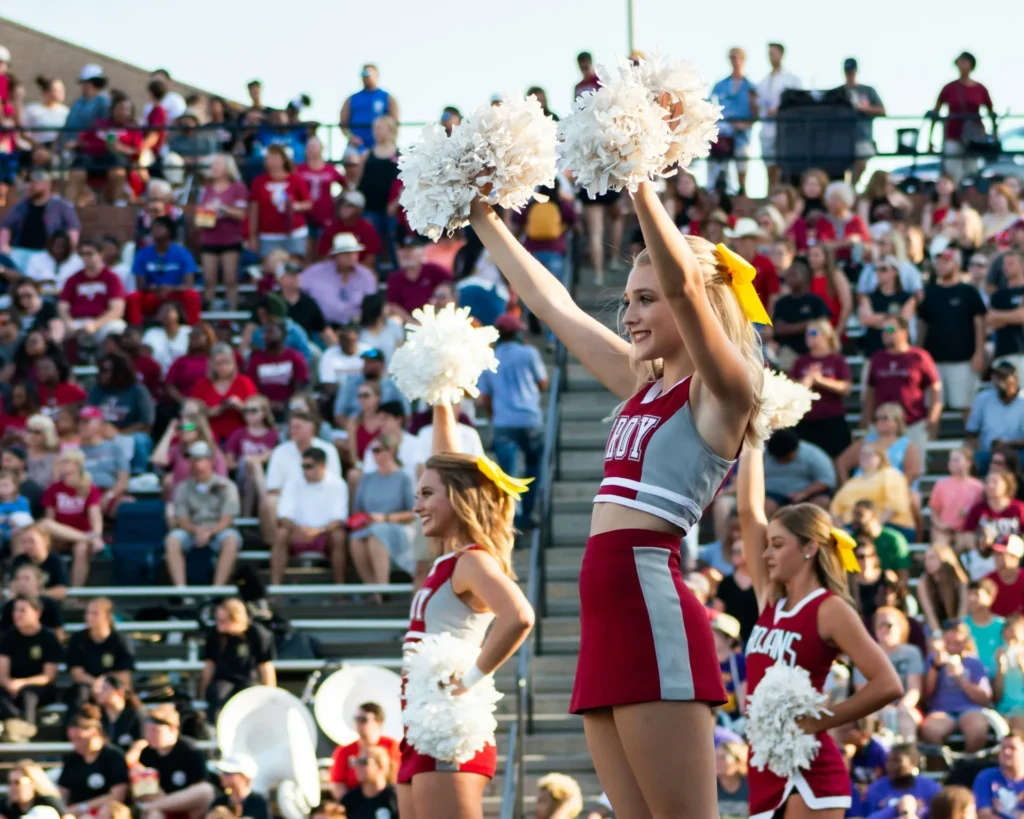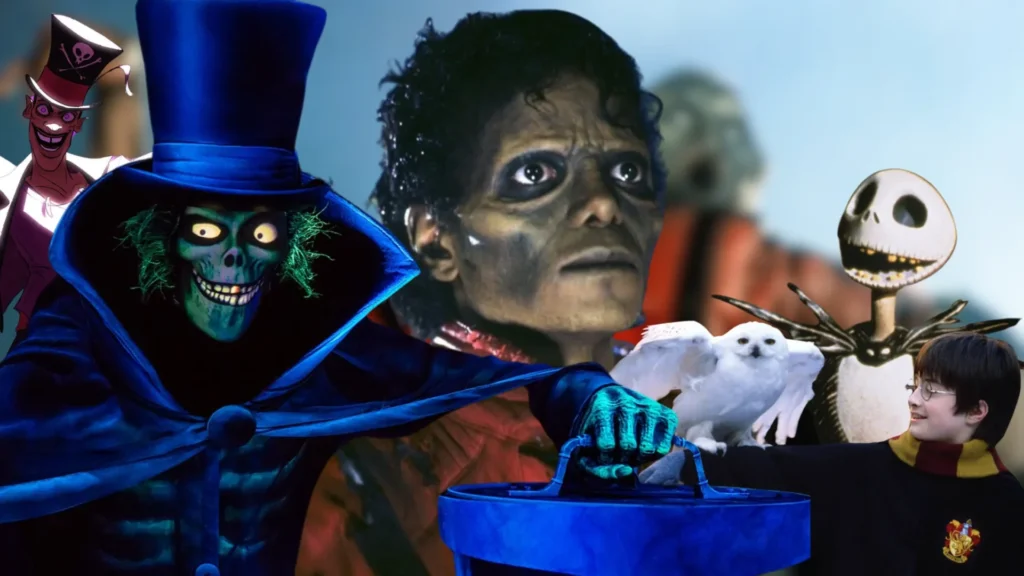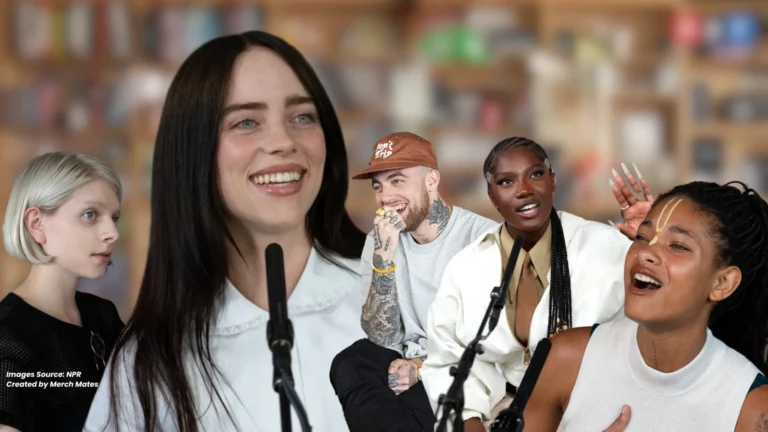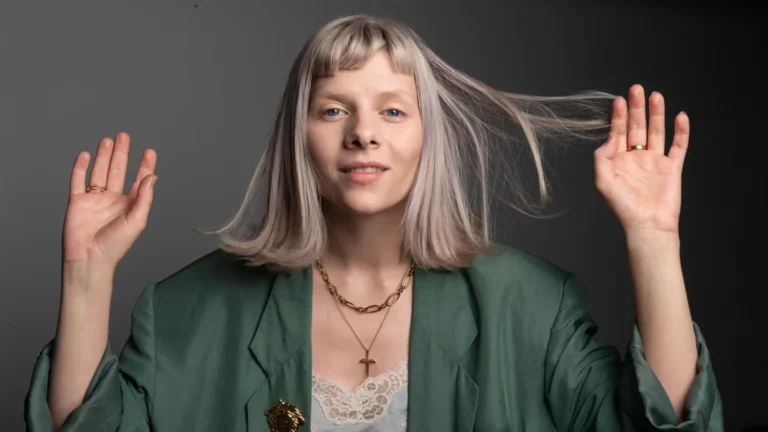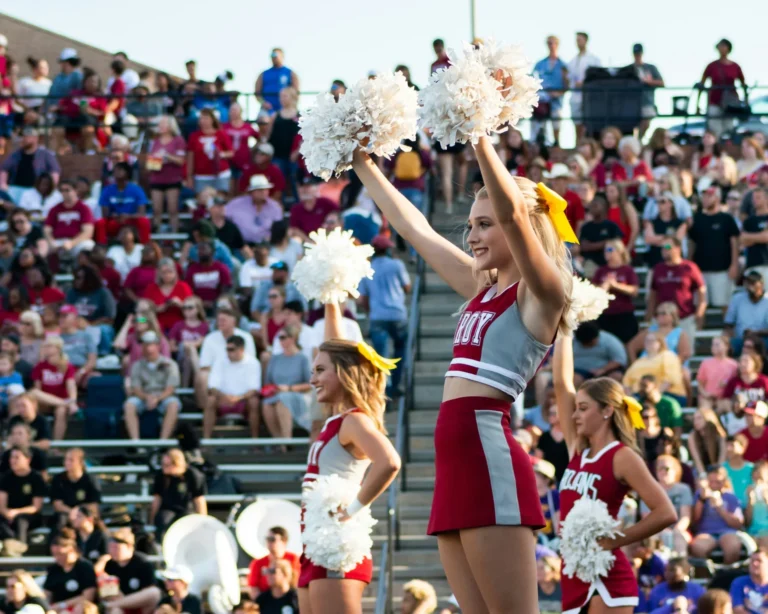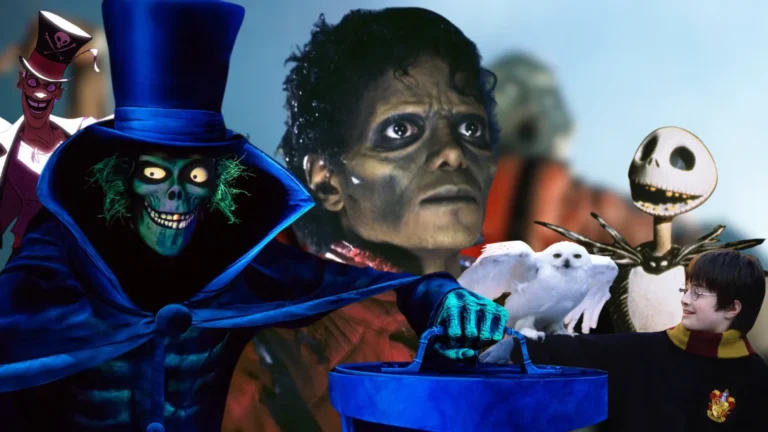AURORA continues to change Hollywood’s sonic map, starting from “Runaway” – a song she wrote at just 11 years old that has now reached over 3 billion streams. Her ethereal voice has inspired artists like Billie Eilish. Her recent ventures into film and television have showcased her artistic range effectively – further demonstrated by various cover versions of already popular songs that she made her own.
AURORA’s music has grown beyond its Nordic folk pop roots into a powerful force in visual storytelling. Netflix’s “Adolescence” series features her song “Through the Eyes of a Child.” Through collaboration with Hans Zimmer for “Frozen Planet II,” she proved her versatility in cinematic scoring. Her unique talent to blend human emotion with natural elements has made her a sought-after voice in Hollywood’s biggest productions.
Her soundtrack journey began quietly in indie films before exploding with Frozen II. Here’s the full scope:
🎬 Film
- Homesick – “Awakening”
- Detour – “Murder Song (5, 4, 3, 2, 1)” (Detour Mix)
- Rock My Heart – “Murder Song” (Acoustic)
- XOXO – “Home” (Lane 8 Remix)
- The Rachel Divide – “Life on Mars”
- Wolfwalkers – “Running with the Wolves” (Reimagined)
- Frozen II – “Into the Unknown” (with Idina Menzel)
- The Secret Garden – “The Secret Garden”
📺 TV
- Frozen Planet II – “Take Me Back Home”
- Adolescence – “Through the Eyes of a Child”
- One Piece – “My Sails Are Set”
- Stjernestøv – “Stjernestøv”
- Hanna – “Midas Touch”
🎮 Games
- Mass Effect: Andromeda – “Under Stars”
- Sky: Children of the Light – Multiple tracks + Virtual Concert
- Assassin’s Creed – “Hunting Shadows”
- FIFA 16 – “Conqueror”
- The Sims 4: Vampires – “Under the Water” (Simlish)
- Beatstar – “The Seed”
- Just Dance 2024 – “Cure for Me”
- Fortnite – “Cure for Me” (Emote)
- Senua’s Saga: Hellblade II – “Animal Soul”
Who is AURORA: The Voice Behind the Magic
A young Aurora Aksnes’s musical voice emerged among the trees and quiet landscapes deep in Norway’s Os mountains. The artist now known simply as AURORA was born in Stavanger on June 15, 1996. She grew up surrounded by nature in a place she likens to the fictional land of Narnia. This environment shaped her unique musical style and point of view.
From Norwegian forests to global stardom
AURORA’s experience started away from industry spotlights, unlike many modern musicians. She lived in a home with “almost no cars, bumpy roads, trees everywhere, quiet surroundings, and bad internet”. She stood out as her family’s only musician. A piano she found in her attic at age six became her first instrument. She taught herself classical pieces and created original melodies.
“I really love classic music, and when I found this piano in the attic, I just started pressing the keys and trying to figure out my favourite classical songs,” AURORA has explained. This self-taught method helped create her unique sound from the start.
She first performed in public with her song “I Had a Dream,” which spoke about the world’s harshness. Professional music wasn’t her original plan – physics or molecular biology seemed more likely paths. Her life changed after her track “Puppet” made it to a national chart in December 2012.
Success came faster for the Norwegian singer afterward. Critics praised her performance at the by:Larm festival in 2014. She made a bold choice on day two of her third grade in upper secondary school. She quit education to focus on music full-time.
Critics loved her 2016 debut album All My Demons Greeting Me as a Friend. She appeared on major American shows like The Tonight Show Starring Jimmy Fallon, Conan, and The Late Show with Stephen Colbert. These appearances boosted her international profile.
The ethereal quality that engages listeners
AURORA’s voice stands out in today’s music scene. Critics often describe it as “ethereal”. She blends falsetto vocal range with unique word emphasis and “twang” technique. She boldly uses her pure, unmixed head voice to create dramatic contrasts between vocal registers.
“Aurora does have pretty excellent breath control, she uses exactly as much air on a note as she wants to,” one analysis of her technique notes. She can reach whistle register notes and shows amazing stamina from her dancing background.
Her voice complements her diverse musical style. Critics see it as a mix of art pop, Nordic folk, synth-pop, electropop, electro-folk, and dark pop. Interview magazine’s Haley Weiss calls her a “poetic author of art-pop.” MusicOMH’s John Murphy describes her songs as a “beguiling mix of sizzling synth-pop and Nordic-folk”.
AURORA brings more than technical skill to her music. One critic said meeting her felt like “being bathed in an ethereal lightness – both in speech and in aura”. Sound engineers note her voice’s three-dimensional quality that cuts through musical arrangements clearly.
She creates immersive concerts by mixing dance and storytelling. Nature inspires her movements that complement lyrics about complex emotions. Some critics call her a “poetic genius”.
AURORA’s artistic identity started in Norwegian forests and now reaches audiences worldwide. Each new project shows why she remains one of Norway’s most distinctive musical voices.
AURORA’s First Steps into Film Soundtracks
AURORA made her mark in Hollywood’s biggest productions after building her soundtrack portfolio through carefully selected projects. She started her music journey in films well before major studios noticed her talent.
Early soundtrack appearances that caught attention
AURORA’s first soundtrack work came in 2015 with “Awakening” for the Norwegian film Homesick. Her unique voice soon featured in indie productions like “Murder Song (5, 4, 3, 2, 1)” – Detour Mix for Detour in 2016 and an acoustic version of the same track for Rock My Heart in 2017.
These early soundtrack choices showed AURORA’s talent for telling emotional stories through music. She picked projects that matched her artistic vision instead of chasing mainstream success:
- “Home” (Lane 8 Remix) – featured in Netflix’s XOXO (2016)
- “Life on Mars” – used in documentary The Rachel Divide (2018)
- “Under Stars” – played during end credits of video game Mass Effect: Andromeda
Each project showed her ability to adapt across film genres. Her work on the animated film Wolfwalkers (2020) stood out as she created a special version of “Running With the Wolves” that perfectly matched the film’s atmosphere with her Nordic sound.
The Frozen II breakthrough moment
Disney’s invitation to work on Frozen II changed everything. Tom MacDougall, executive vice president of music at Disney, said getting AURORA’s voice for the Nordic-inspired film was a “no brainer”. She became the ethereal “secret siren” that guides Queen Elsa to find her true origins.
Recording “Into The Unknown” with Idina Menzel became a turning point. AURORA recorded her haunting vocals in an English church building – “We almost didn’t need any reverb because the room carried my voice so far on its own,” she said. The building’s natural acoustics added magic to her performance.
The results were remarkable. AURORA’s unique listeners on Pandora grew by 1,442.7% between November 11-December 8, 2019, compared to October. Her total streams rose by 659%, reaching their peak on Frozen II’s opening day. The song reached No. 55 on the Billboard Hot 100 chart, and AURORA climbed to No. 8 on Billboard’s Emerging Artists chart.
Her global fame grew rapidly. The song earned an Academy Award nomination, and AURORA performed with Idina Menzel at the 92nd Academy Awards in February 2020. She shared the stage with nine international singers who had recorded the song in their languages.
The Disney project created new opportunities. AURORA later wrote “The Secret Garden” as the title track for Marc Munden’s film adaptation – a song from years earlier, inspired by Frances Hodgson Burnett’s book.
“When they asked me to make a song for the movie remake, I was so happy and tried to pitch them this old song. It was so meant to be,” AURORA said. Producer Rosie Alison agreed, saying they were “thrilled when The Secret Garden sparked this collaboration with her”.
How Netflix’s Adolescence Catapulted AURORA’s Hollywood Presence
AURORA’s “Through the Eyes of a Child” has found an unexpected second life. This 2016 track from her debut album became the emotional heart of Netflix’s groundbreaking series Adolescence in 2025.
The perfect musical match for emotional storytelling
Adolescence runs on a tense musical score most episodes. AURORA’s song stands out as one of the only “needle drops” in the four-episode series. Her haunting vocals play during the final episode’s closing sequence and bring a powerful emotional close to the show’s challenging themes.
“I feel like it’s meant to be,” AURORA told Big Issue about the placement. “I’m just lucky the director [Phil Barantini] and actor [Stephen Graham], beautiful man, chose to put my song at the end because when music joins hands with cinematography, together they improve each other and strike a chord with people in a completely different way”.
This musical pairing hits home because of its thematic connection. AURORA shared on Instagram: “The deep need for the world to stop neglecting the inner child, and confusing innocence with weakness”. These words mirror the series’ take on adolescent vulnerability and societal pressures.
“The song makes a lot of sense to me now. I was an adolescent myself when I wrote and recorded it,” AURORA said. “It was very touching and weird to hear my young voice there, at the extreme heartbreak of the whole show”.
Fan reactions and streaming numbers
The numbers tell the story. Adolescence made British TV history as the first streaming show to become the most-watched program of the week. The premiere episode pulled in 6.45 million viewers during its first week.
Fans poured their hearts out on social media and AURORA’s Instagram:
- “The way I started to tear up when this played!” exclaimed one fan
- Another simply stated that the scene “WRECKED me”
AURORA seemed surprised by her song’s renewed attention: “It’s a strange and wonderful thing to see people connecting with this song. The world around me has changed so much since I wrote it. And now the words mean a lot more to me”.
This wasn’t AURORA’s first Netflix win. Her song “My Sails Are Set” from the Netflix series “One Piece” got 24,428,210 streams on Spotify alone. Over the last several years, older songs finding new life through visual media shows a significant part of AURORA’s career path.
“The revival of older songs in conjunction with new releases underlines the cyclical nature of music, where themes of childhood, innocence, and emotional struggle strike a chord across generations,” noted one music industry analyst.
AURORA’s music creates emotional depth in visual storytelling. Her “ethereal” vocals and Nordic-influenced sounds build atmosphere without dialog – something filmmakers love when they want music to boost emotional impact.
AURORA’s Unique Sound: Why Filmmakers Can’t Get Enough
AURORA’s sonic fingerprint combines elements that filmmakers find irresistible when creating atmosphere. Her music defies simple categorisation. She blends electropop, folk, art pop, Nordic-folk, synth-pop, and even avant-garde influences into something completely unique. This sonic versatility makes her work exceptionally valuable to visual storytelling.
The Nordic folk influence that creates atmosphere
The Norwegian singer’s sound draws heavily from her cultural roots and creates cinematic landscapes through music. Her compositions blend traditional string instruments, Kulning vocals—an ancient Swedish herding call—with modern electronic synth chords. Critics describe this fusion as “ethereal, introspective, relaxing, and absolutely magical.”
Paper magazine acknowledged this distinctive approach and identified her as “Scandinavia’s newest dark pop prodigy.” Her love for Nordic folklore resembles Björk’s fascination with Icelandic landscapes. This connection to nature pervades her work, making it perfect for films that need atmospheric depth.
Ethereal vocals that exceed language barriers
Filmmakers find AURORA’s soprano vocal range captivating, and critics and collaborators consistently describe it as “ethereal.” Her voice cuts through musical arrangements with unusual clarity, creating what sound engineers note as a “three-dimensional” presence.
Since Infections of a Different Kind (Step 1), she started using an invented “emotional language” in her performances. “My own language is an emotional language and it means what you need it to mean in the now,” she explains. “You can feel the melody and instruments without having any input on what I’m saying.”
This approach proves especially valuable for soundtrack work where emotion matters more than literal meaning.
Creating emotional depth without dialog
Film directors value AURORA’s knack for conveying complex feelings without words. Her danceable yet ethereal tracks show how she balances accessibility with emotional resonance—a combination vital for visual media.
“The room was beautiful, round, and it carried my voice to infinity and beyond without any extra reverb,” she noted about recording in an old English church for Frozen II. Directors consistently choose her work for emotionally pivotal scenes because of this natural atmospheric quality.
Her music’s cinematic nature extends to its structure. Many compositions start gently and build into powerful emotional statements that mirror filmmakers’ desired narrative arcs.
Behind the Scenes: How AURORA Creates Music for Film
AURORA turns into a devoted sonic warrior when she creates film music. The Norwegian musician treats soundtrack work with almost religious dedication. Each invitation becomes a sacred trust between her and the filmmaker.
Her collaborative process with directors
“Whenever I get asked by someone else to make something to compliment their piece of art, like in a movie, I take it very seriously,” AURORA explains. Her commitment shows through fierce loyalty to the project: “I will not disappoint you, I promise on my family that I will do you and your movie justice!”
Her intensity proved valuable during her collaboration with legendary composer Hans Zimmer for the Frozen Planet II soundtrack in 2022. They created “Take Me Back Home” and performed it at London’s Royal Albert Hall during BBC’s Earth Proms. The performance demonstrated how naturally her ethereal voice blends with orchestral arrangements.
Personal silence preferences aside, film scores remain one of the few musical genres AURORA keeps taking. “I love movie tracks, I love wordless music with no words,” she admits. Her playlist favourites feature works by Hans Zimmer, Thomas Newman, and Johann Johansen – artists skilled at emotional storytelling through instrumental composition.
Balancing artistic vision with storytelling needs
The greatest challenge for AURORA lies in surrendering her artistic ego to serve someone else’s vision. “It’s just way more scary when you have to do something to please someone else,” she confesses. This creative constraint has helped her tap into new dimensions in her artistry.
“I was thinking that I should be inspired by movies and books more,” she reflects. “I realised how magical it can be to make a piece of art inspired by someone else’s piece of art! It’s such a beautiful circle of magical creative things”.
Conclusion
AURORA’s musical trip from Norwegian forests to Hollywood blockbusters showcases her unique musical gift. Her ethereal voice combines Nordic folk with modern elements and has created a distinctive space in film soundtracks. She has proven her versatility beyond traditional pop music through collaborations with industry giants like Hans Zimmer and Disney.
Her work in Frozen II and feature in Netflix’s Adolescence demonstrates how her music enhances visual storytelling. Filmmakers value her talent to create emotional depth without words, which makes her a great addition to projects needing authentic atmospheric sound.
This Norwegian artist’s future shines bright since she wrote her first songs at age 11. Her commitment to each project’s unique vision and distinctive sound suggests more of her haunting melodies will grace upcoming Hollywood productions. AURORA’s music doesn’t just accompany scenes – it breathes life into them and creates magic that stays with viewers long after the credits roll.
FAQs
How did AURORA’s unique sound develop?
AURORA’s distinctive sound blends elements of electropop, Nordic folk, and art pop. Growing up isolated in the Norwegian forests shaped her musical perspective, leading to an ethereal vocal quality and atmospheric compositions that draw from both traditional and modern influences.
What impact has AURORA’s music had on film soundtracks?
AURORA’s music has become increasingly sought-after for film soundtracks due to its ability to create emotional depth without relying on lyrics. Her breakthrough came with Disney’s Frozen II, where she voiced the “secret siren.” Since then, her ethereal vocals and atmospheric compositions have enhanced numerous films and TV shows.
How does AURORA balance artistic vision with commercial success?
AURORA works closely with her management team to strike a balance between her artistic integrity and commercial viability. While she prioritises creating meaningful, authentic music, she also recognises the importance of having some radio-friendly tracks to reach a wider audience and sustain her career.
What is AURORA’s process for creating music for films?
When composing for films, AURORA approaches each project with intense dedication. She creates a visual map of the story in her mind and crafts sonic landscapes that enhance the narrative without overwhelming it. She views soundtrack work as a unique artistic challenge that allows her to serve someone else’s vision.
How has AURORA’s music evolved since her early career?
AURORA’s music has matured significantly since her early career. While her debut album showcased her unique voice and songwriting, her more recent works demonstrate greater creative control and a willingness to experiment with different sounds and themes. She continues to push boundaries while maintaining her distinctive ethereal quality.
